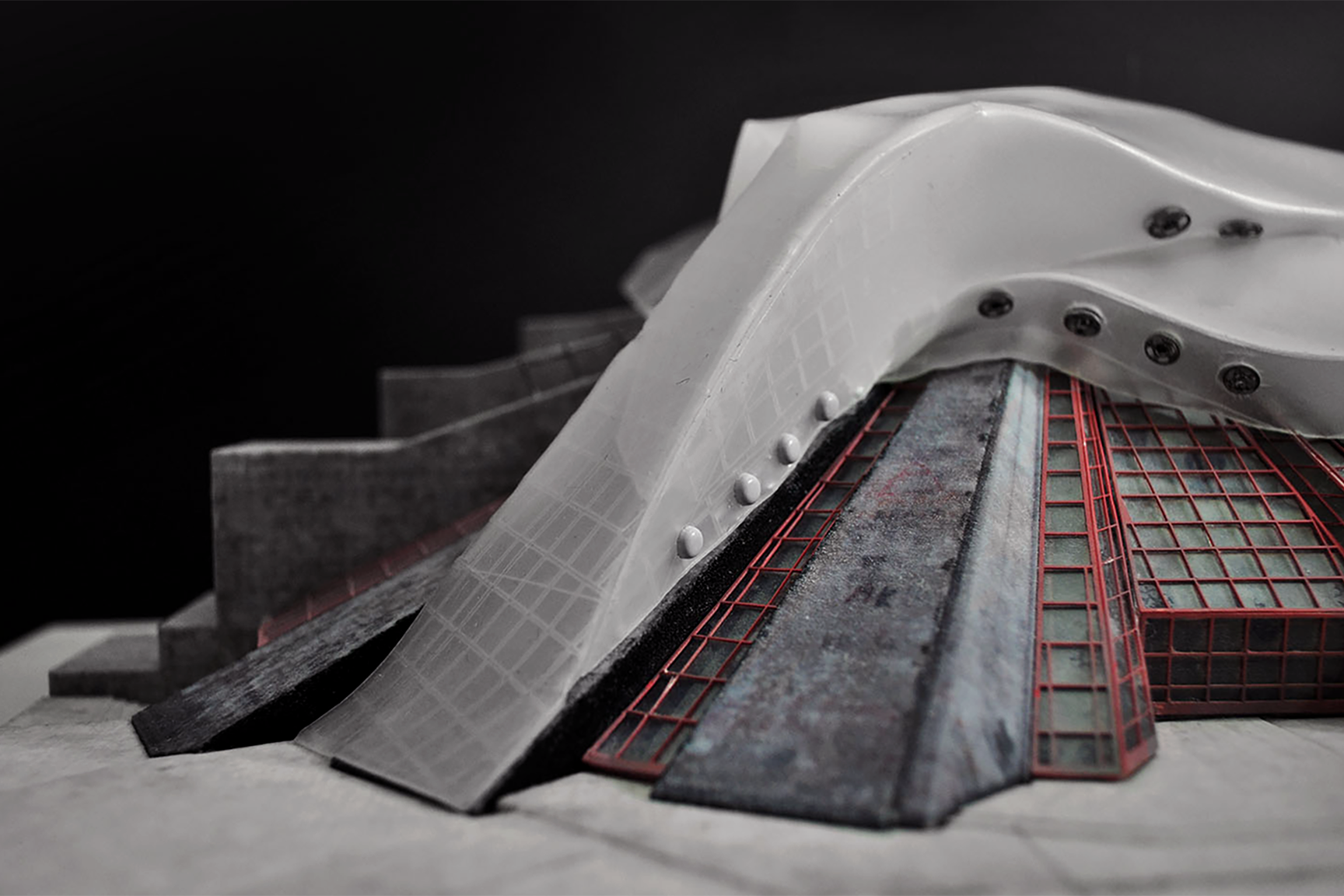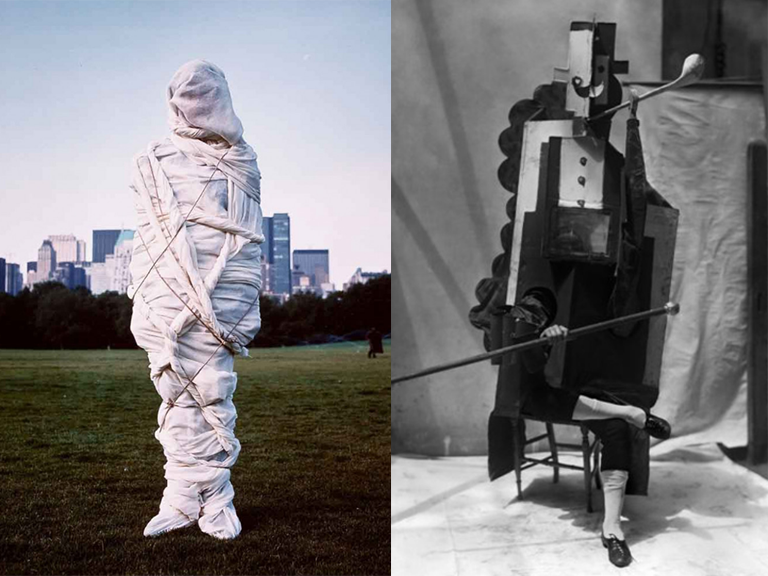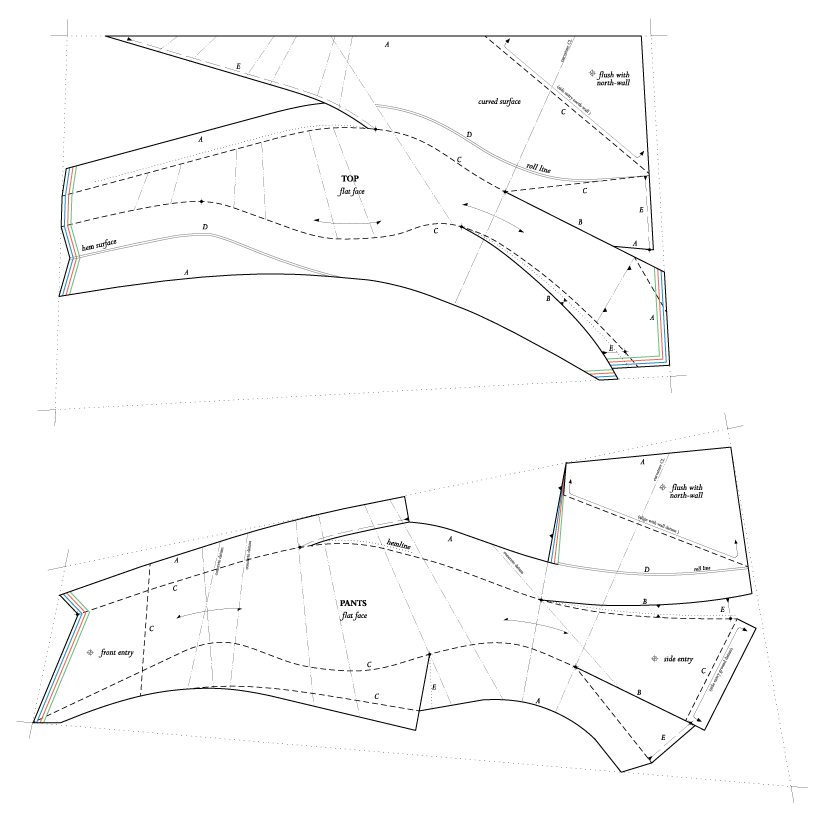
Sarcophagus Fitting
Graduate Advanced Topic Studio
Professor: Jason Payne
M.Arch, UCLA AUD
Graduate Advanced Topic Studio
Professor: Jason Payne
M.Arch, UCLA AUD
The Chernobyl Sarcophagus, constructed after the catastrophic nuclear accident of April 1986, is referred to globally after the town of its location. However, the Russian name for this sarcophagus can be translated to “sheltering” or “covering” or more suitably “the sheltered object.” Here, the sarcophagus is an indexical array of the reactor, surrendering completely to the language of the object below.
Twenty-five years later in Japan, a steel rectangular frame with polyester fabric panels was dropped over reactor-1, at Fukushima. Antithetical to the covered object, this sarcophagus is a fashioned object; an object establishing a new language that is idiosyncratic and aesthetic in nature. In this way, the project imports a conceptual ideology alien to the context of the project itself and therefore positions itself as internal to the discourse. Can a sarcophagus operate in the tension between the dumb covered-object and the dominance of the fashioned-object?
Twenty-five years later in Japan, a steel rectangular frame with polyester fabric panels was dropped over reactor-1, at Fukushima. Antithetical to the covered object, this sarcophagus is a fashioned object; an object establishing a new language that is idiosyncratic and aesthetic in nature. In this way, the project imports a conceptual ideology alien to the context of the project itself and therefore positions itself as internal to the discourse. Can a sarcophagus operate in the tension between the dumb covered-object and the dominance of the fashioned-object?

Chernobyl Sarcophagus
(1896)

Chernobyl Sarcophagus (2011)

left: Annie Liebowitz - Portrait of Christo (1981), right: Pablo Picasso - Costume (1917)





Positioned in the space between the covered-object and fashioned-object, the project redefines the sarcophagus as a tailored garment. It does not engage in the pursuit to achieve an identical twin. Every object will always exhibit varying effects depending on its environment. Instead the project acknowledges the inherent incapability of an exact copy and instead recalibrates with each misregistration that occurs between forms of representation. By focusing on major inconsistencies in the aesthetic scale of the sarcophagus, the project questions the notion of bigness by fashioning for the pyrmaid and oversized suit.




